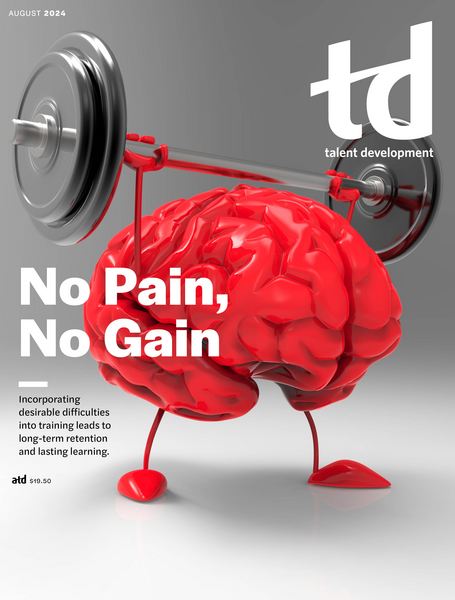TD Magazine Article
Artificial Intelligence, August 2024
The number of uses for artificial intelligence is seemingly infinite.
Published Thu Aug 01 2024
The number of uses for artificial intelligence is seemingly infinite. Employees and employers alike are leveraging AI tools to streamline processes and increase productivity. What has ChatGPT done for you lately? As the proliferation of AI continues, workplaces will likewise keep innovating to identify the various tasks with which an AI tool could assist. However, the human element of workplaces is not going away anytime soon. The vendors on the next page offer more insights on the integration of AI in the workplace.
As recent graduates transition into the workforce, many are questioning the impact of artificial intelligence on their new jobs. Experts suggest that proficiency in AI is becoming increasingly essential. For graduates entering the workforce, being well-versed in AI can significantly enhance productivity and efficiency in various roles.
Graham Glass, founder and CEO of CYPHER Learning, emphasizes the growing importance of AI in professional settings. "Almost any job in the workforce can benefit from AI, with few exceptions," he notes. Glass points out that at CYPHER Learning, there is an expectation for employees to use AI tools to improve productivity. He expresses concern for employees in almost any position who are not utilizing AI, suggesting that familiarity with AI is no longer optional but necessary.
As businesses increasingly integrate AI into their operations, graduates who lack AI skills may find themselves at a disadvantage. To avoid being the "clueless graduate" in a tech-savvy environment, it is crucial for new employees to develop a strong understanding of AI and its applications in the workplace. Such preparation will not only enhance individual productivity but also align with the evolving technological landscape of modern industries.
For more AI insights from Glass, visit:
The integration of artificial intelligence into the corporate landscape is increasingly seen as a game-changer for productivity and innovation. However, the true potential of AI can only be realized through an effective change management mindset.
As talent management professionals, fostering an environment where employees are open to change is paramount. It's about more than just introducing cutting-edge AI platforms; it's about guiding your workforce to embrace new ways of thinking and working.
This shift requires a practical and compassionate approach to change management, emphasizing the value of continuous learning and adaptation. By empowering employees to experience AI as an ally, organizations can pave the way for remarkable improvements in productivity and personal growth.
When employees are encouraged to explore and experiment with AI tools—with proper guidance and guardrails—they can have a transformative experience and develop a personal vision for how AI can help the business, based on their own experiences.
In essence, the journey to realizing AI's benefits is as much about people as it is about technology. By prioritizing change management, businesses can create a culture of AI experimentation and personal growth, ensuring AI adoption leads to meaningful business success.
The past decade has seen artificial intelligence gain traction across industries, and now there's no doubt that AI has made its way into the L&D industry. But is AI really coming for your instructional design job? Yes and no. AI alone isn't going to fully replace your role—but another instructional designer who's using AI to its fullest potential might.
Instructional designers know how many different skills are required to create engaging and effective training content: needs analysis, writing and editing, collaborating with subject matter experts and key stakeholders, graphic design, sometimes a little bit of coding—the list goes on and on. Can AI replace all that? No, but it can certainly help speed up research, chunk content into bite-size pieces, suggest alternate phrasing, or create a needed graphic.
There's a reason that, when it debuted in 2022, ChatGPT became the fastest commercial app in history to reach 100 million users. Many people saw the potential for streamlining workflows and assisting with content creation. The instructional designers who embrace AI now and learn to use it as an effective tool are the ones who will still be around to embrace the next big tech revolution after AI.




